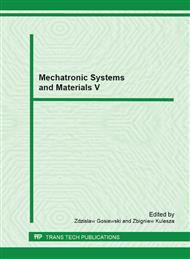p.478
p.484
p.490
p.496
p.502
p.508
p.514
p.518
p.524
The Active Thermography Method as Used to Assess the Bearing of Temperature on Thermophysical Properties of Superalloy of a Gas-Turbine Blade
Abstract:
The method of active thermography is an innovative NDT technology that was developed over the recent years to investigate microstructure condition of machinery components, including components of gas turbines. The essence of the method consists is examination of the thermal response of a material as a function of time to simulation by means of an external heat pulse. When the microstructure contains areas that differ in thermophysical properties, such differences entail alteration of the diffusion velocity. Therefore monitoring of the temperature field that spreads on the surface area of a workpiece that is being cooled down makes it possible to find locations of such different areas. The paper outlines initial results of investigations, carried out with use of the active thermography, how the temperature affects onto thermophysical properties demonstrated by superalloys used for construction of gas turbines. These investigations enabled to find out variations of thermophysical properties of these superalloys as a function of temperature. Eventually they laid down the fundamentals to undertake broader research studies in that domain. The core objective of the studies was to find out the relationships between variations of the thermal impact and corresponding amendments in the response signal received from the investigated material and to detect the correlations that have not yet been defined with sufficient accuracy. The described relationships and liaisons may contribute to development of fundamentals for the new NDT thermographic method suitable to evaluate the overheating status of gas turbine blades.
Info:
Periodical:
Pages:
502-507
Citation:
Online since:
March 2013
Authors:
Price:
Сopyright:
© 2013 Trans Tech Publications Ltd. All Rights Reserved
Share:
Citation:


